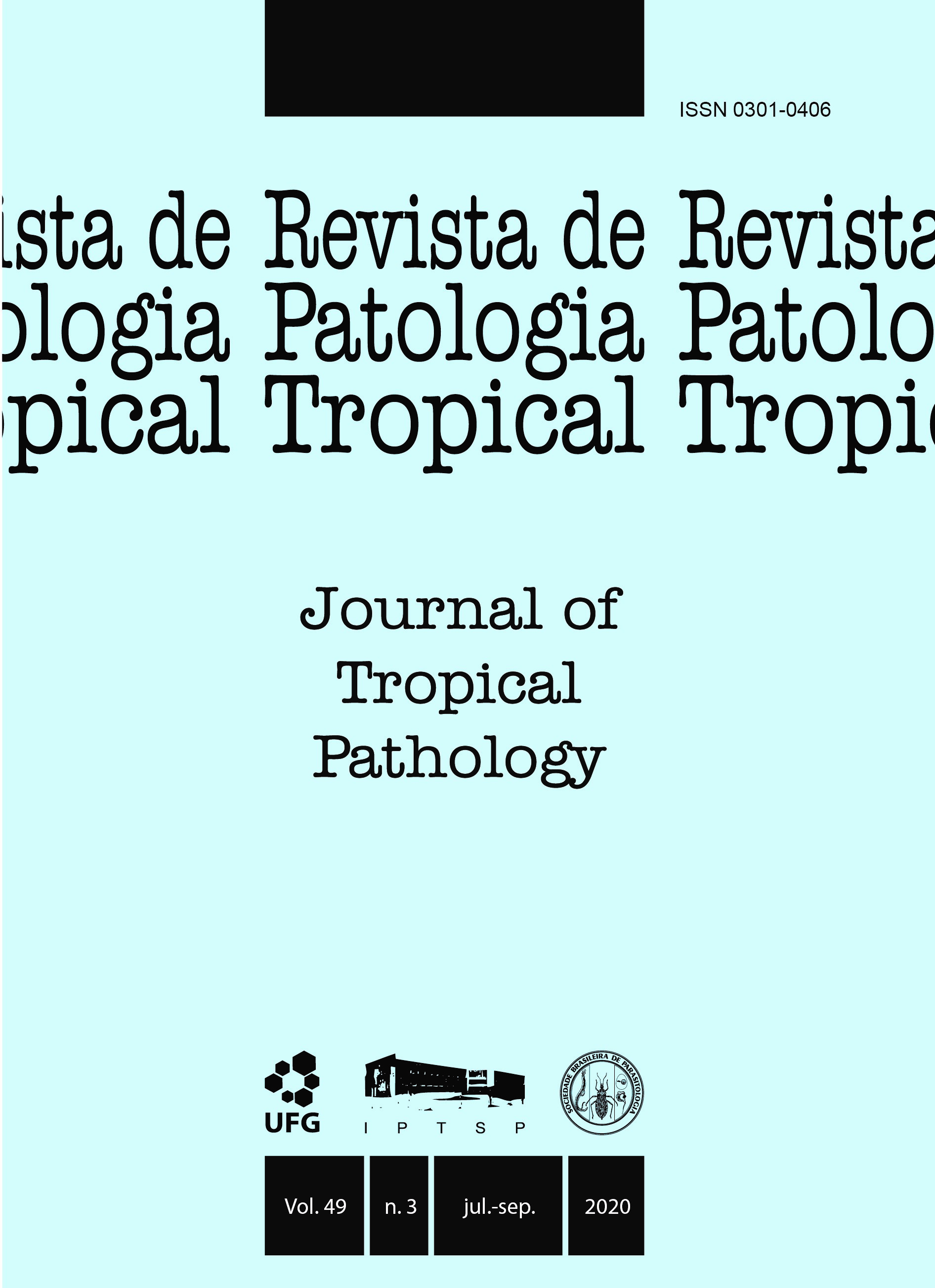Occurrence of parasites in salads in restaurants in Aparecida de Goiânia, Goiás, Brazil
DOI:
https://doi.org/10.5216/rpt.v49i3.62681Resumo
Parasitoses are the most widespread diseases in the world. They are transmited via contaminated water or food. Considering that the daily consumption of vegetables is estimated at 142g per person, the purpose of this study was to evaluate the occurrence of parasites in salads available for consumption in restaurants in Aparecida de Goiânia, Goiás State. Salad samples were collected from the restaurants and parasitological analysis was performed using the Willis, Hoffman, Faust and Ziehl Neelsen techniques as well as cultures for the isolation of free-living amoebae. 51 samples were analyzed, 16 (31.4%) were positive. The parasites detected were: Acanthamoeba spp. in 12 (23.5%); free-living larvae, Schistosoma mansoni and Entamoeba coli in 1 (2.0%); Endolimax nana in 2 (3.9%). The PCR technique determined that 17.6% of the samples presented Toxoplasma gondii DNA. These techniques evidenced that the salad samples presented parasite contamination not only in the restaurants with the lowest price per Kg, but also in the most expensive ones. Therefore, in addition to effective sanitary surveillance, prophylactic measures are necessary regarding suppliers, handlers and restaurant owners to prevent the spread of these and other parasites.
KEY WORDS: Food contamination; food parasitology; polymerase chain reaction.
Downloads
Downloads
Publicado
Como Citar
Edição
Seção
Licença
The manuscript submission must be accompanied by a letter signed by all authors stating their full name and email address, confirming that the manuscript or part of it has not been published or is under consideration for publication elsewhere, and agreeing to transfer copyright in all media and formats for Journal of Tropical Pathology.

